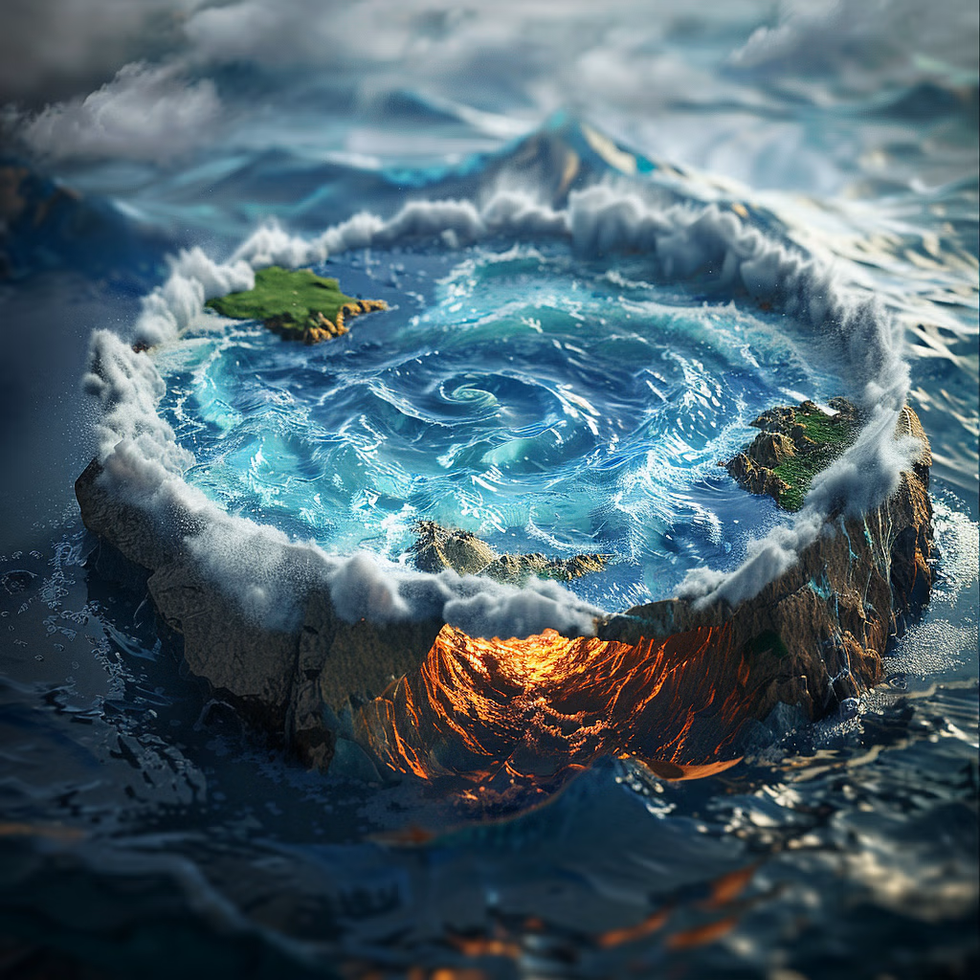Researchers at Northwestern University in Evanston, Illinois have made a groundbreaking discovery of an enormous reservoir of water hidden beneath the Earth’s surface.
Location and Size:
- Location: Approximately 700 kilometers beneath the Earth’s crust.
- Size: Estimated to be three times larger than all the planet’s oceans combined.
Implications:
- Geological Impact: Promises to reshape our understanding of the Earth’s geology and water cycle.
- Insights: Provides profound insights into the planet’s composition and history.
Discovery:
- Scientists discovered a hidden ocean while investigating the origins of Earth’s water.
- Located within a mineral called ringwoodite.
- Much larger than all the surface oceans combined.
Theoretical Challenge:
- Challenges Current Theories: Its size challenges current theories about Earth’s water sources.
- New Questions: Suggests new questions about the planet’s formation and evolution.
Alternative Theory:
- Contradictory Theories: Long-standing disputes about the origins of water on Earth.
- Alternative Theory: Recent discovery suggests Earth’s water may have originated from deep within the planet.
Evidence and Explanation:
- Evidence: Discovery of a subterranean ocean provides strong evidence for the alternative theory.
- Explanation: Water gradually seeped out from the core over time, sustaining an abundance of water on the planet’s surface.
Methodology:
- Seismograph Deployment: Research team positioned 2000 seismographs across the United States.
- Observation of Seismic Waves: Studied seismic waves caused by over 500 earthquakes.
Detection of Water:
- Behavior of Waves: Notable slowing down of seismic waves observed, indicating the presence of water within the Earth’s interior.
Geological Significance:
- Contradiction of Traditional Beliefs: Discovery of water in the Earth’s mantle contradicts traditional beliefs.
- New Prospects: Provides new prospects for exploration and understanding of the water cycle.
Future Research:
- Seismic Data Collection: Scientists are working to collect more seismic data from different parts of the world.
- Aim: Determine how often the mantle melts to gain valuable insights into the water cycle.
Conclusion:
- Exploration Continues: Scientists continue to explore what lies beneath the Earth’s surface.
- Anticipated Discoveries: On the verge of uncovering the secrets of our planet’s ancient past and uncertain future.
Multiple Choice Questions (MCQs):
- Where was the groundbreaking discovery of the hidden reservoir of water made?
- a) Harvard University
- b) Northwestern University
- c) Stanford University
- d) Oxford University
- Answer: b) Northwestern University
- How deep beneath the Earth’s crust is the hidden reservoir of water located?
- a) 500 kilometers
- b) 700 kilometers
- c) 1000 kilometers
- d) 2000 kilometers
- Answer: b) 700 kilometers
- What mineral contains the hidden ocean discovered by scientists?
- a) Quartz
- b) Ringwoodite
- c) Feldspar
- d) Calcite
- Answer: b) Ringwoodite
- How did scientists detect the presence of water within the Earth’s interior?
- a) Using satellites
- b) Analyzing rocks on the surface
- c) Studying seismic waves
- d) Conducting underwater surveys
- Answer: c) Studying seismic waves
- What is one of the significant impacts of the discovery on the understanding of Earth’s water cycle?
- a) It confirms traditional beliefs
- b) It contradicts current theories
- c) It reduces the importance of mantle melting
- d) It limits prospects for exploration
- Answer: b) It contradicts current theories
